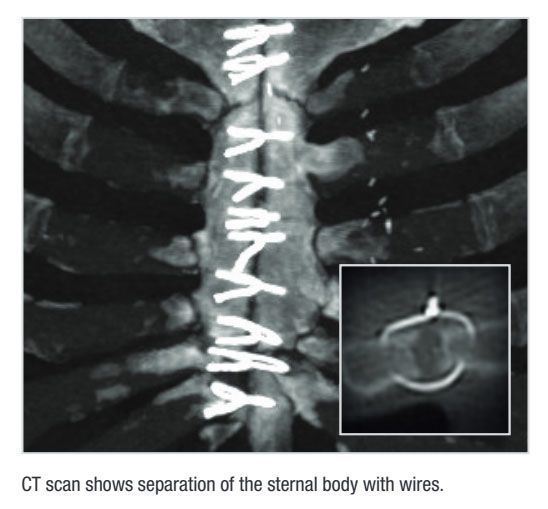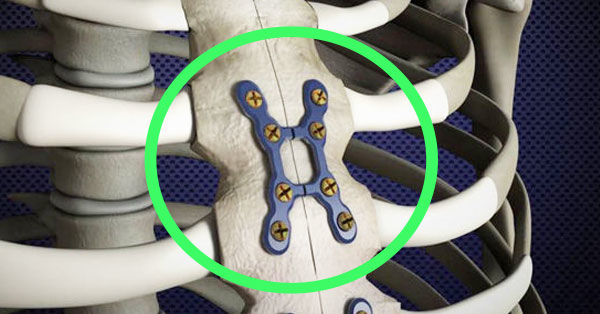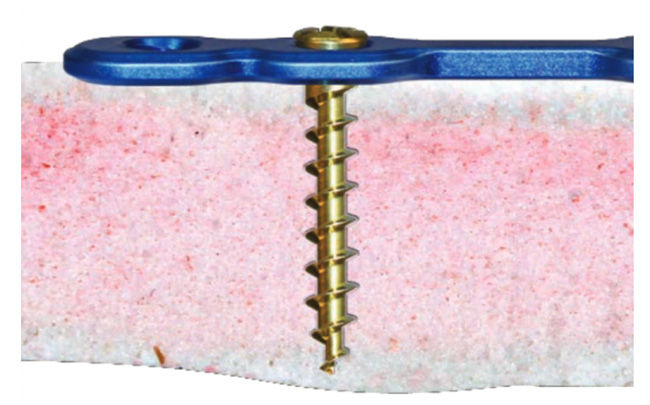Technology Update: SternaLock Blu May Bring Faster Healing & Less Pain to Heart Surgery Patients
Written By: Adam Pick, Patient Advocate, Author & Website Founder
Page Last Updated: June 6, 2025
For heart surgery patients, one of the scary and dislocating thoughts associated with the operation is… having your sternum broken.
Personally, I remember holding my chest as Dr. Starnes explained the procedure. First, my breast bone would be “separated.” (I think that was a kind way of saying that my sternum would be cracked.) Then, my heart would be opened. Next, my valves would be replaced. Finally, Dr. Starnes would use wires to secure my sternum.
“Wires?” I thought to myself, “How on Earth are wires going to keep my sternum stable?”

Sternum Wires & Heart Surgery?
So you know, wires have been used during heart surgery for more than 50 years. That’s right… 50 years. However, as patients in our community have shared openly, sternum wires can cause severe distress, sharp pains and long-term discomfort. In fact, many patients have had their wires removed 6 months, 1 year, or many years after surgery.
Stephen May, a retired patient shared with me, “My pain after open heart surgery was unbelievable! My sternum wires still bother me 14 years later.”
FYI, I can relate to Stephen. My sternal wires still irritate me every so often. I can get a jolt of pain when I’m lifting a suitcase or when I’m simply stretching.
An Alternative to Sternum Wires?
Given this problem within our patient community, I’ve continued to research alternatives to help patients recover faster from sternum or rib fractures. During that research, I came across the concept of rigid sternal fixation.
Rigid sternal fixation is the use of metal plates and screws to stabilize fractured (broken) bones. The thin titanium plates have multiple holes for specialized bone screws to pass through into the sternum – preventing movement in any direction – regardless of the direction of stress. The plates and screws provide added stability to the sternum to help facilitate the healing process after heart surgery.
After posting an interview with Dr. Marc Gerdisch about rigid sternal fixation, my inbox lit up with questions about rigid fixation and, more specifically, about the SternaLock Blu System that was referenced in that post.
What is the SternaLock® Blu System?
According to the American Heart Association, there are over 700,000 open heart surgeries performed in the United States ever year. The SternaLock Blu System was developed to provide an alternative to sternal wires by using rigid sternal fixation for sternotomies and minimally invasive surgery.
As you can see below, the SternaLock Blu uses thin plates across the fractured bone to secure the sternum in place.
The plates are secured into place using special screws that lock the plates at a 90 degree angle – rigidly fixating the bone halves together.
What are the Top 3 Benefits of the SternaLock Blu?
While the idea of the SternaLock Blu is interesting, I was curious to know whether or not there was any clinical research that illustrated true patient benefits. It turns out there have been several research studies that indicate how rigid sternal fixation creates three core benefits:
- Increased stability
- Greater strength
- Reduced sternal separation
Disclaimer: Internal fixation devices aid the surgeon in the alignment and stabilization of bone in the anterior chest wall for fixation of fractures and reconstructive procedures. While these devices are generally successful in attaining these goals, they cannot be expected to replace normal healthy bone or withstand the unsupported stress placed upon the device by full load bearing. Patients have experienced and may experience such risks as pain, discomfort, abnormal sensation or palpability due to the presence of the plates and screws, decomposition or poor, incomplete or delayed healing of the bone, infection, nerve or soft tissue (non-bone) damage.
Talk to your surgeon about whether SternaLock Blu is right for you.
For additional risk information or contraindications (i.e., information on individuals who are not suitable candidates for SternaLock), please visit www.sternalock.com.
In addition, the SternaLock Blu Study followed 236 patients (116 SternaLock Blu patients and 120 wire closure patients) who had heart surgery at 12 hospitals in the United States. The study found that the patient group treated with the SternaLock Blu:
- Experienced improved and faster healing at three and six months
- Had fewer sternal complications
- Spent fewer total days in rehab hospitals or skilled nursing facilities
Which Surgeons Use the Sternalock Blu?
As you may know, heart surgeons do not use all the devices and technologies that are available to them. There are just too many. So, surgeons typically have preferences. For example, some surgeons prefer robotic surgery for mitral valve repair surgery while other surgeons prefer a sternotomy.
The same applies to the use of rigid sternal fixation. Some surgeons use it, while others do not.
What are Patients Saying About SternaLock Blu?
I don’t know about you… But, for me, rigid sternal fixation seems like an intriguing alternative to sternal wires.
So you know, I’m not alone in my thinking. Many patients are now seeking doctors who specialize in valve therapy and SternaLock Blu. For example, I recently received a phone call from a patient who said, “Adam – I heard of a doctor who is using those titanium plates. I’ve seen his valve patient testimonials; I’m going to him.”

Then, there is the story of Tammi Gunwall, from Victoria, Minnesota:
In a recent post about her experiences with sternal wires and rigid sternal fixation, Tammi posted, “I suffered a year and a half with severe sternal pain and movement after heart surgery. The wires weren’t sufficient enough to hold things in place after a mini-sternotomy procedure that required a J-type cut. I finally had the titanium chest plate put in to help heal and secure my sternum. It has made a world of difference!!!”
Related Links:
- Rigid Sternal Fixation: A New Approach to Sternal Closure
- Download the SternaLock Blu brochure
- Visit the SternaLock Blu Website for more information on SternaLock, including all risks associated with SternaLock
Keep on tickin!
Adam
Disclaimer: While SternaLock Blu reduced some patients’ pain and made their lives more enjoyable post-operation, as may be noted in testimonials referenced or incorporated herein, appropriate post-operation activities differ from patient to patient. As a result, and due to differences in health, weight, activity level and other variables, your ability to engage in activities following an operation may vary from your abilities prior to undergoing heart surgery. Talk to your surgeon about whether SternaLock Blu is right for you and the risks of the procedure, including the risk of implant wear or failure.















